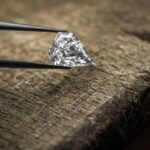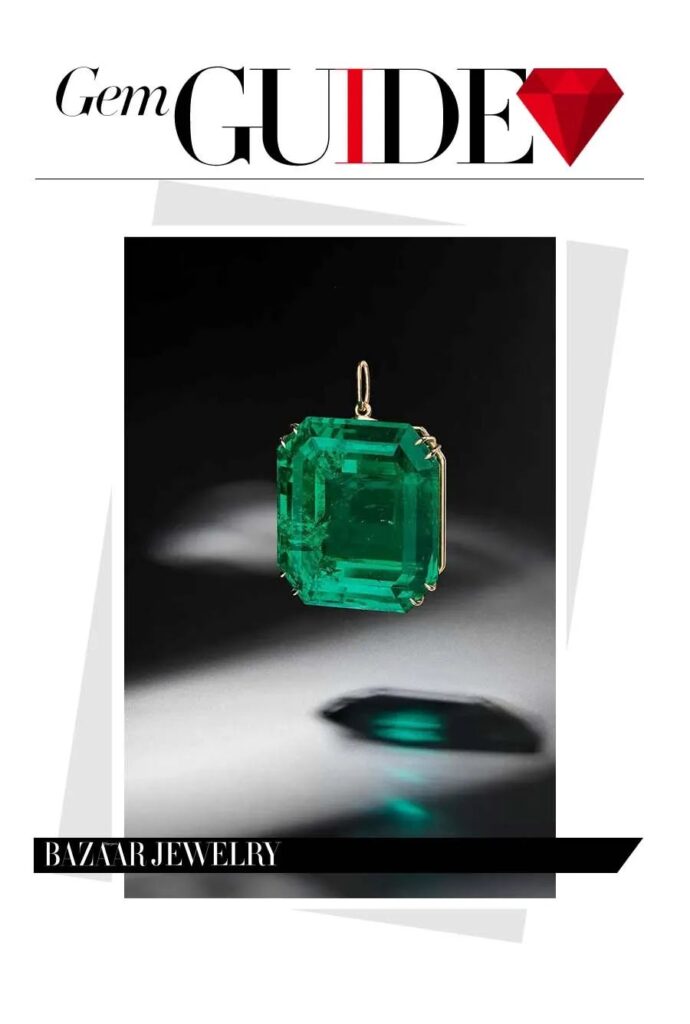
Recently, auction houses have been reporting impressive results, with the gemstone collection market heating up. Particularly noteworthy was the appearance of a 280.84-carat Colombian emerald known as the “Queen of the Amazon,” the largest emerald ever to be auctioned.
Everyone was expecting it to set a new record. Although it ultimately sold for 2,782,500 Swiss francs, exceeding its high estimate, it was overshadowed by a 1.56-carat red diamond called the “Argyle Phoenix” that appeared in the same auction.
This “returning” red diamond sold for 3,811,000 Swiss francs, more than double its price at the previous auction! Are red diamonds really that powerful? What should we look for in gemstone collecting?
The story that unfolded at this Phillips auction wasn’t entirely surprising. While everyone knows that Colombian emeralds are very rare, especially those of record-breaking size, in terms of rarity, they still fall slightly short of colored diamonds.
Particularly this red diamond – how to put it? You might think 1.56 carats is small, but for a red diamond, it’s an astonishing size. Moreover, colored diamonds are already rare, and if we rank colored diamonds by rarity, red diamonds undoubtedly top the list.
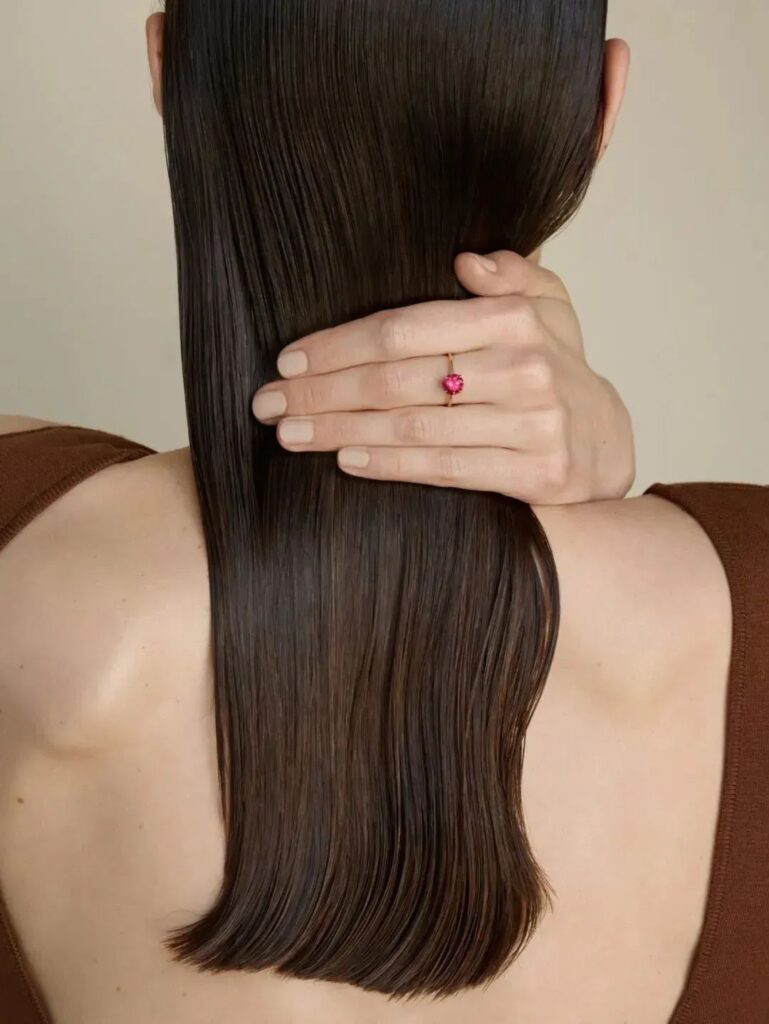
According to GIA data, only 0.4% of all natural diamonds graded in the past 20 years were colored. Among all these colored diamonds, red is the rarest color. They are extremely scarce, with fewer than 30 known truly red natural diamonds.

5.03 carats, currently in the Smithsonian Museum
The “Argyle Phoenix” red diamond broke two world records in this auction: one for the price of a red diamond, and another for the per-carat price. In its first auction held by Rio Tinto in 2013, the “Argyle Phoenix” set the record for the highest per-carat price for any diamond ever mined from the Argyle mine at $2 million.

This time, it simply doubled its own record from years ago. So who made such a bold move? Yes, it was Laurence Graff, known for his love of legendary diamonds, who acquired this high-quality red diamond for over 3.8 million Swiss francs (4.2 million USD, or 2.7 million USD per carat).
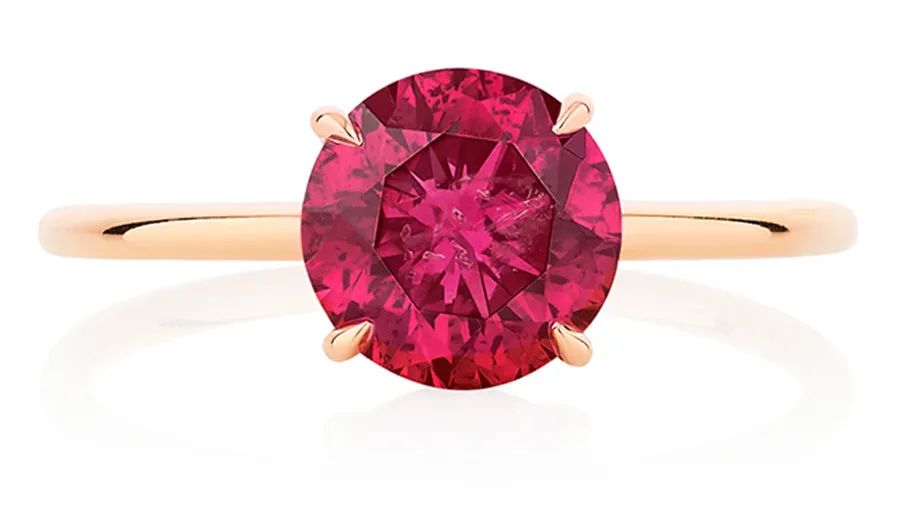
1.56 carats, Fancy Red
May 2024, Phillips Geneva
Estimate: 910,000 – 1,365,000 Swiss francs
Sold for: 3,811,000 Swiss francs
The “Argyle Phoenix” comes from the Argyle mine, renowned for its high-quality pink diamonds, but it’s also the main source of red diamonds, though they’re even rarer and typically smaller.
According to official data, less than 20 carats of pure red diamonds were produced from Argyle between 1987 and 2017. Most were under 1 carat, with only about 10 Argyle red diamonds ever produced reaching 1 carat.
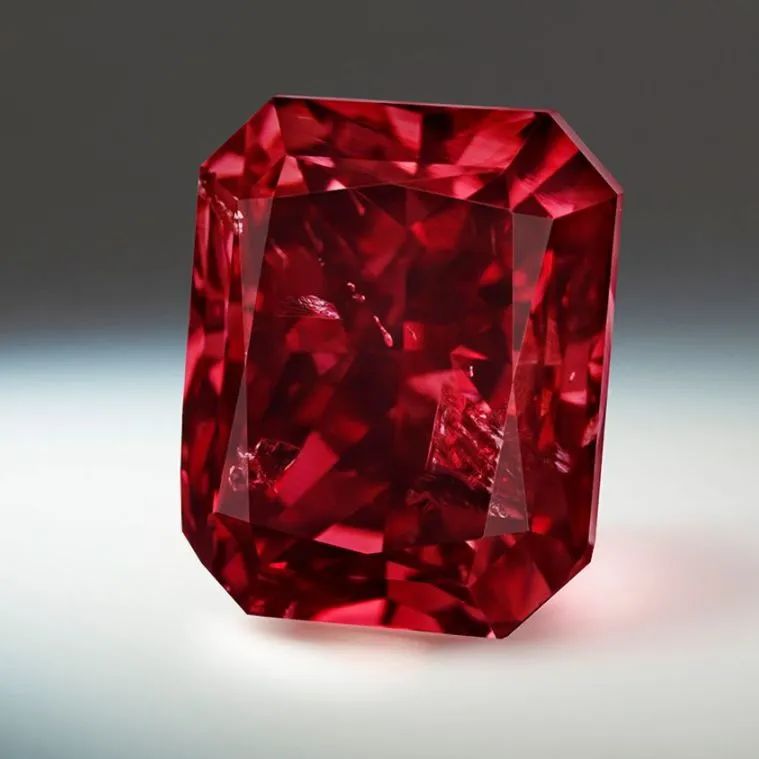
A brilliant red diamond appeared
So, following the principle of “rarity equals value,” it’s not surprising that the “Argyle Phoenix” was acquired by Graff. But besides red diamonds, how do other colored diamonds rank?
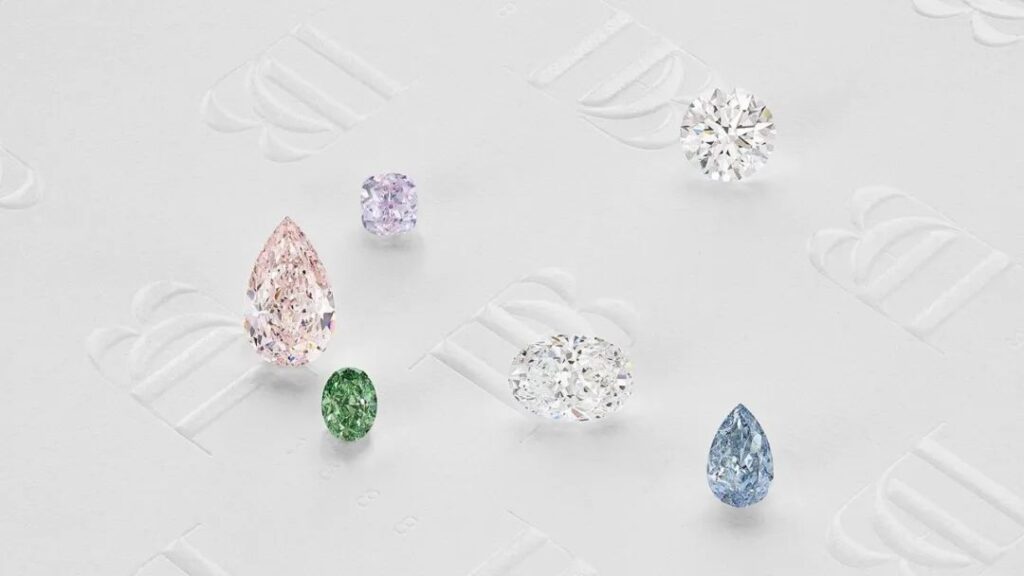
In terms of rarity, green and blue diamonds are considered second-tier contenders, both equally rare. However, green diamonds only became widely known to the public when Ben Affleck proposed to Jennifer Lopez for the second time. In terms of popularity, they seem far less known than blue diamonds, and there are very few famous green diamonds in history. Why is this?

The reason green diamonds display this color is due to natural radiation from within the Earth after their formation, causing them to reflect green light.
Usually, this color is like a “coating” or covering on the diamond’s surface, meaning the green doesn’t penetrate the entire gemstone. Cutting a green diamond means maintaining this color integrity while preserving its carat weight… A stunning gemstone might require a full year to plan, cut, and polish.
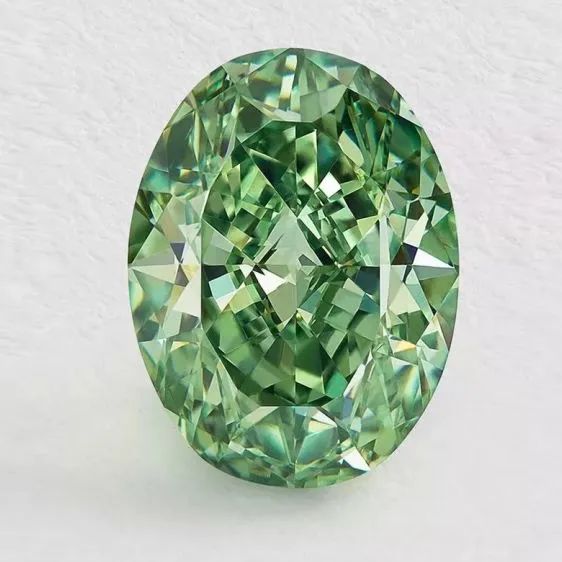
Digging deeper, you’ll find that even diamond experts are skeptical about green diamonds. Why? Because it’s difficult to determine whether the green color is natural or artificially produced through irradiation treatment. The latter is a common method of enhancing color in all types of diamonds and has existed since the 1940s.
However, when it comes to value, the difference between natural and artificial is vast, but it’s extremely hard to identify. Even gemstone testing laboratories describe distinguishing between them as “one of the biggest challenges in diamond testing.”
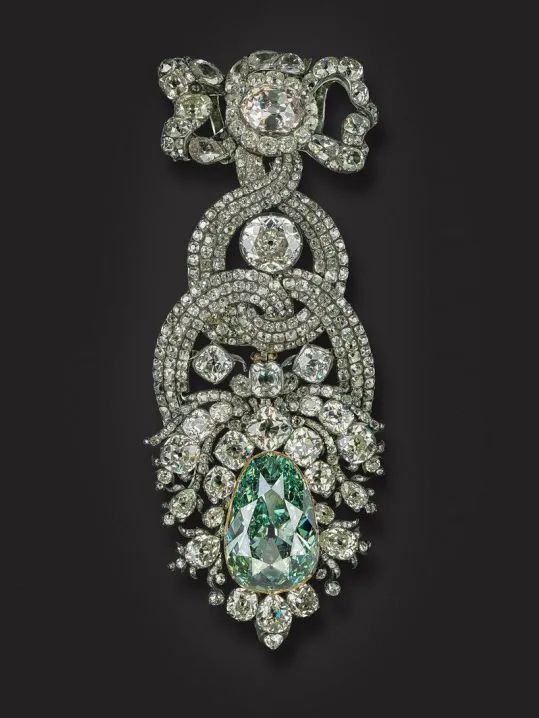
Blue diamonds don’t have this problem. Their blue color is produced by trace amounts of boron randomly present in the gem’s carbon structure, formed deep within the Earth’s core.
There are also quite a few large carat blue diamonds, and historically famous blue diamonds are more numerous, such as the 15th century “Eye of the Idol” and the 17th century “Hope Diamond.” High-quality blue diamonds also frequently appear in modern auctions and have long been a favorite among collectors.
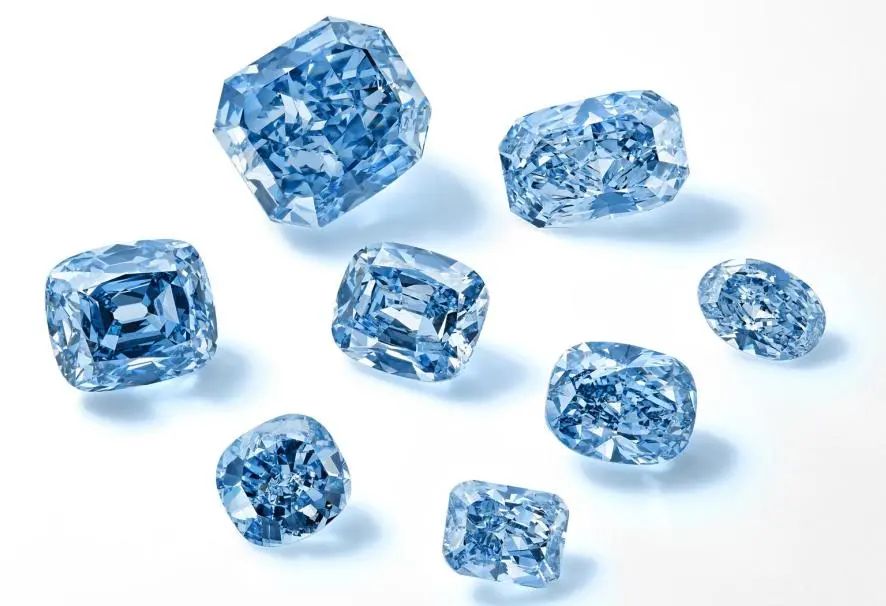
The earliest known blue diamonds came from the legendary Kollur mine in the Golconda region of India, but in recent years, the only mine regularly producing blue diamonds has been the Cullinan mine in South Africa. Despite reports of decreased supply over the past decade, this mine has reportedly discovered three fancy vivid blue diamonds in the last ten years.
These include the 12.03-carat Blue Moon of Josephine, sold for $48.5 million in 2015; the 14.62-carat Oppenheimer Blue Diamond, sold for $57.54 million in 2016; and most recently, the 15.1-carat De Beers Cullinan Blue Diamond, the largest of its kind ever to appear at auction, sold for $57.5 million in 2022.
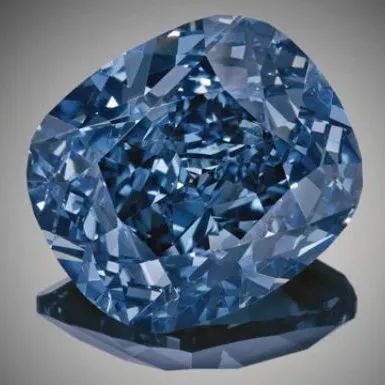
12.03 carats
November 2015, Sotheby’s
Sold for: $48,468,158
Following blue diamonds are pink diamonds, frequent guests at auctions and even more popular, especially as their romantic color makes them more sought-after in the wedding ring market.
Pink diamonds used to have a consistent, albeit small, supply due to the Argyle mine. However, with Rio Tinto Group’s announcement of the mine’s closure in 2020, the scarcity of pink diamonds has dramatically increased.
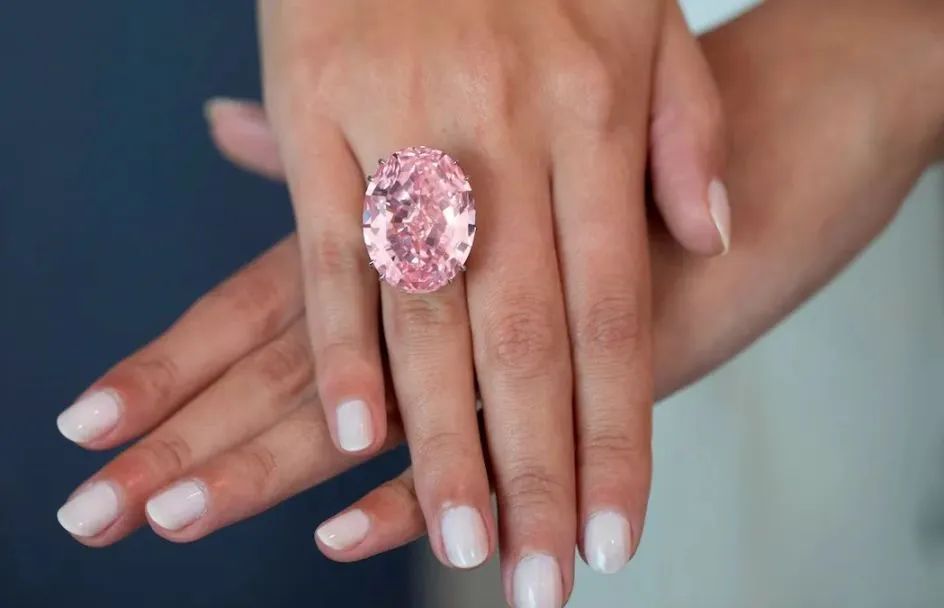
59.60 carats, Vivid Pink, Type IIa diamond
April 2017, Sotheby’s
Sold for: $71,200,000
In the recent Phillips auction, while the “Argyle Phoenix” red diamond attracted significant attention, the highest-valued item was actually a 6.21-carat pink diamond, which became the “top seller” at 10,869,500 Swiss francs. This diamond not only achieved a Fancy Vivid color grade but was also a rare VS1/Type IIa diamond, making it top-tier in color, clarity, and carat weight for pink diamonds.
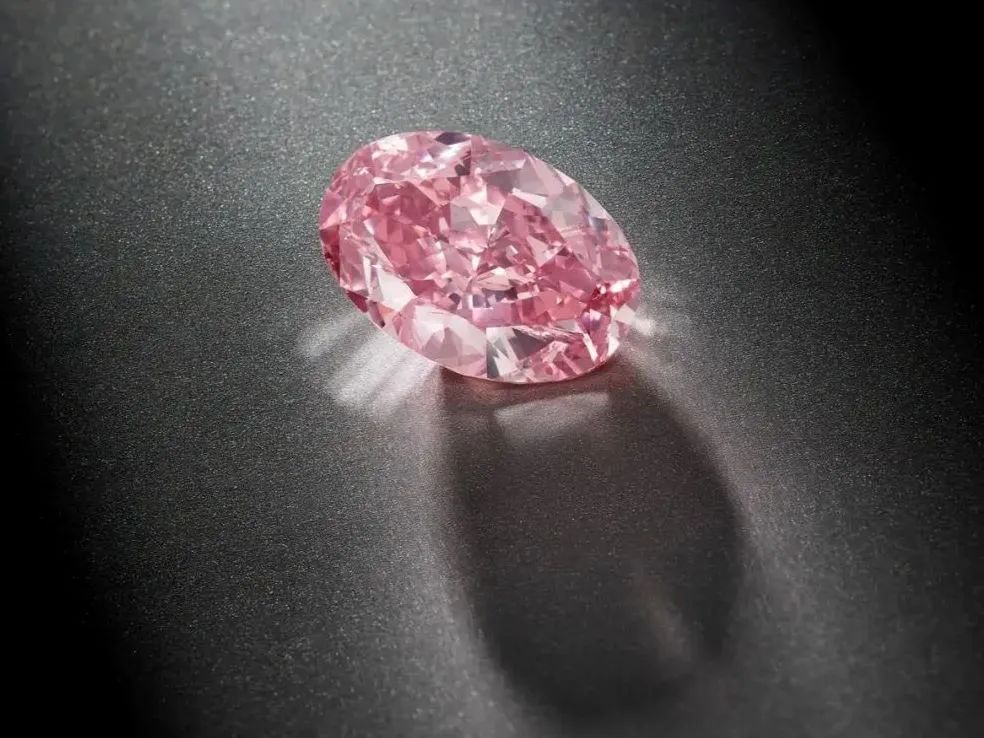
Fancy Vivid Pink, VS1/Type IIa diamond
May 2024, Phillips Geneva
Estimate: 9,540,000 – 13,630,000 Swiss francs
Sold for: 10,869,500 Swiss francs
Among colored diamonds, after the rare red, green, blue, and pink, yellow diamonds command high prices and are more familiar to the public. After all, who hasn’t heard of Tiffany’s legendary yellow diamond? The color of yellow diamonds, combined with the unique fire of diamonds, makes them comparable to brilliant sunlight, thus highly popular among collectors.
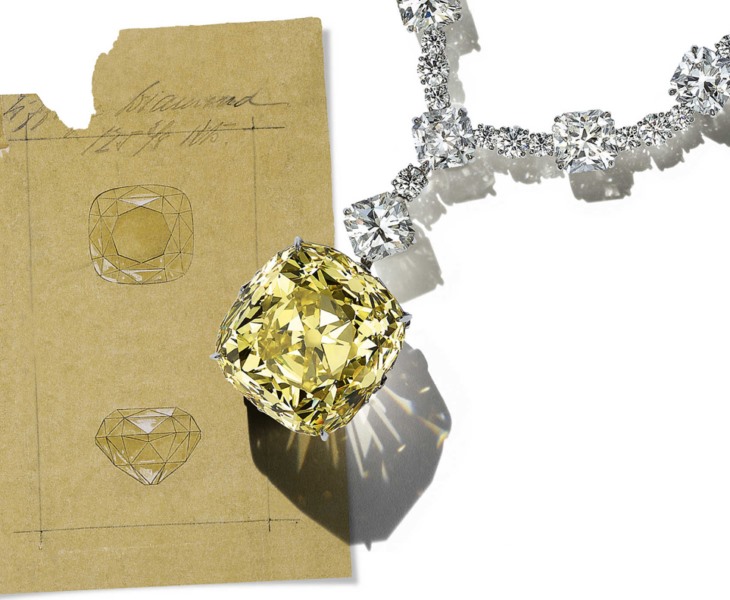
Unlike the previously mentioned colored diamonds, which are either rare in production or limited to single sources, yellow diamonds have relatively more sources. Africa, Australia, Brazil, Russia, and Canada all have yellow diamond mines.
The Ellendale Mine in Western Australia is the world’s largest single producer of rare fancy yellow diamonds, while the Zimmi diamond mine in Sierra Leone, Africa, is famous for producing the finest “Canary Yellow” diamonds.

The relatively higher production means you can carefully choose higher quality yellow diamonds, and they’re more likely to appear in larger carats, making them extremely captivating.
For instance, Tiffany’s legendary yellow diamond is considered their crown jewel. Laurence Graff, known for his love of legendary diamonds, has collected five exceptional yellow diamonds.
Interestingly, in a recent Sotheby’s “Magnificent Jewels and Noble Jewels” auction, a 101-carat yellow diamond called “The Allnatt” was meant to be the auction’s highlight, but after the preview, the owner decided to withdraw it and keep it in their collection.
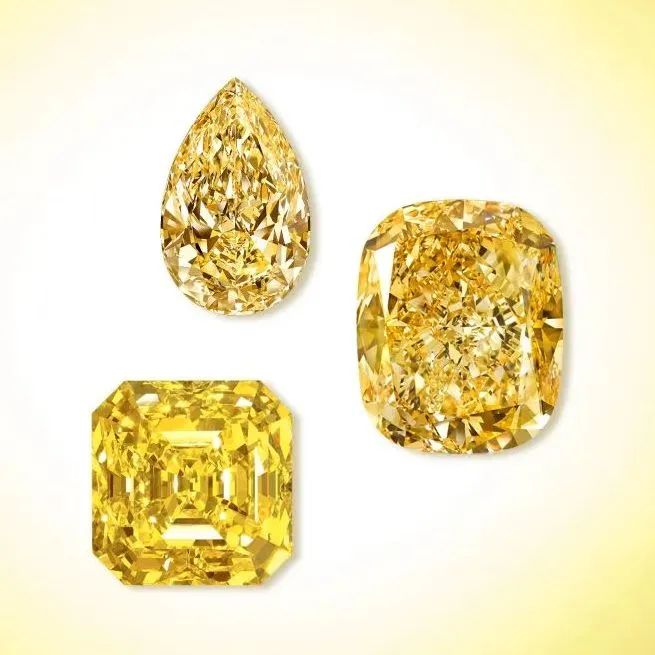
47.39-carat square emerald-cut yellow diamond
The Golden Empress
132.55-carat cushion-cut Fancy Intense yellow diamond
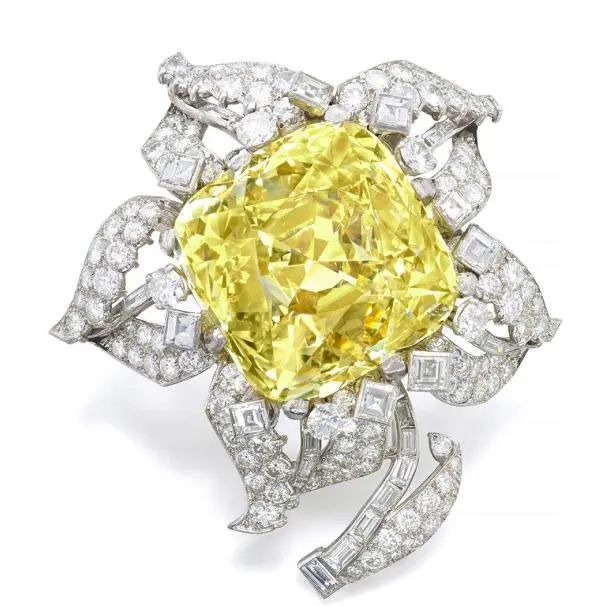
Moving on from colored diamonds, let’s discuss the “classic trio” of the gemstone collection world – rubies, sapphires, and emeralds. These have been popular for centuries, with their values continuously rising. At the 2024 Tucson show, John W. Ford Sr., CEO of the American Gem Trade Association (AGTA), stated: “Rubies, sapphires, and emeralds have seen the largest price increases among colored gemstones.
Among these three, the price of blue sapphires this year will shock you, while rubies, especially high-quality ones, have become a scarce resource due to limited supply from Myanmar, with their price increase tending to stabilize.”
For these three rare gemstones, every jewelry collector wants to acquire them, but how to choose? Everyone knows that color is the most important factor for the “classic trio,” but origin can significantly boost their value. For instance, sapphires from Kashmir, rubies from Myanmar, and emeralds from Colombia are always in high demand.
However, if you’ve been following recent news in the gemstone world, you’ll notice that besides origin and color, high-quality gemstones often compete on clarity.
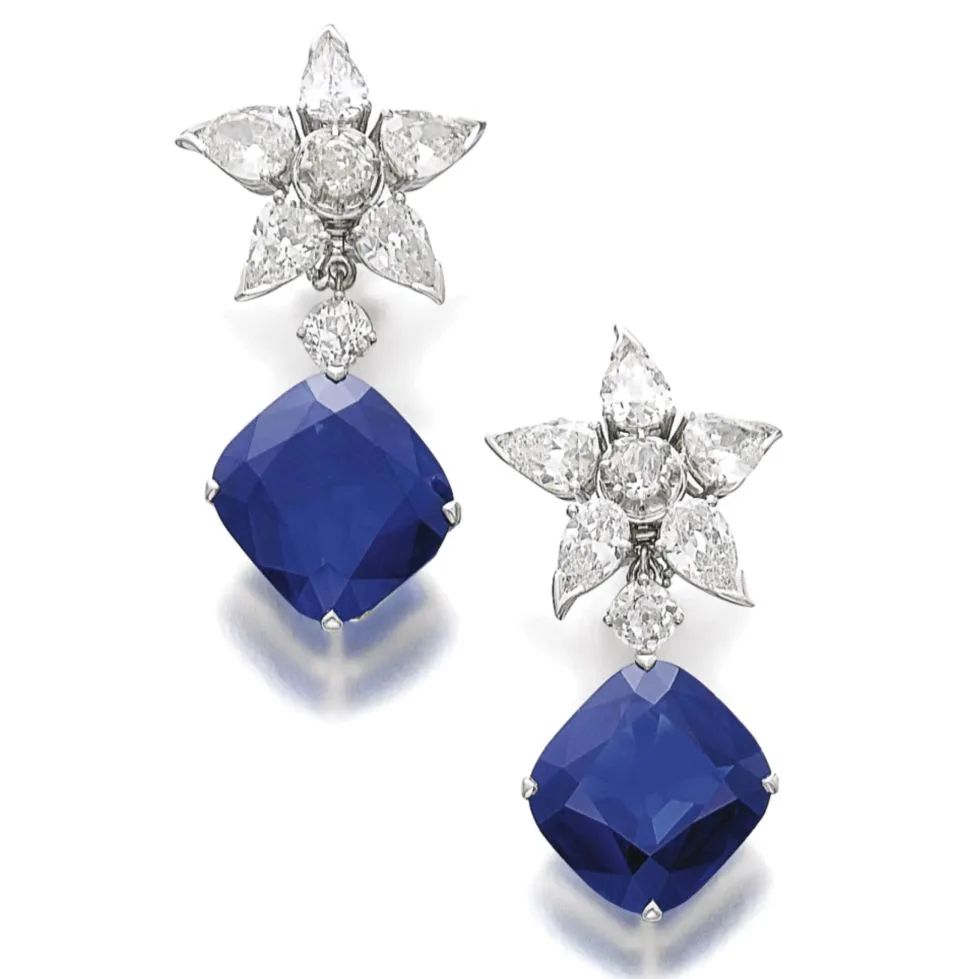
Sotheby’s auction 2013
Sold for: 7,000,000 Swiss francs
Consider “The Amazon Queen” emerald that appeared in this auction. Weighing 280.84 carats, it’s the largest emerald ever to come to auction and originates from Colombia. Why didn’t it take the top spot? While facing strong competition was a factor, it was also due to the emerald itself having numerous fissures and inclusions, even after “minor oiling” treatment.
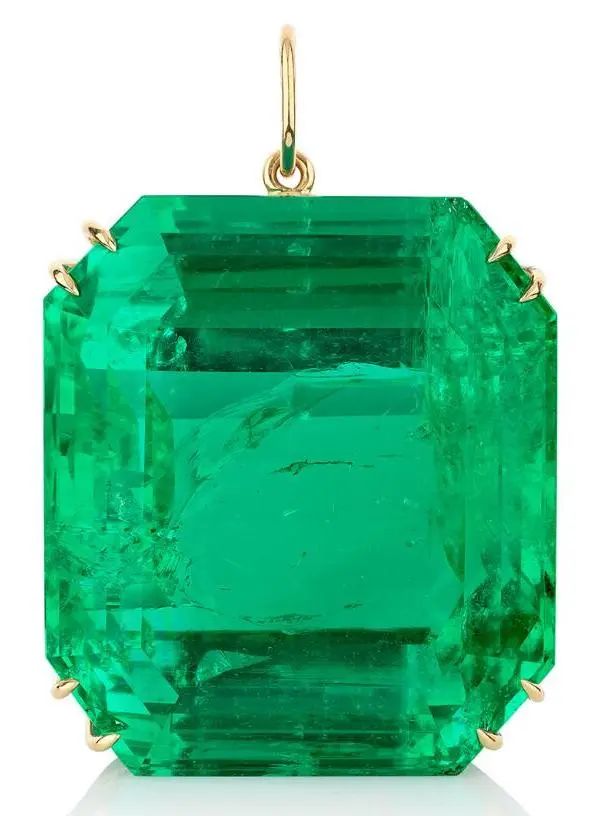
Although 99% of natural emeralds contain inclusions, they even have a beautiful name for this – “Jardin” (French for garden). This is because natural emeralds form inclusions of gases, other minerals, crystals, and liquids during crystallization, creating unique internal features.
Sometimes these can create fascinating patterns, making each emerald unique, and they can even increase the gem’s value. However, excessive inclusions and fissures still affect a gemstone’s value.

Remember the “Tiffany Muzo Emerald” that Tiffany specially named? Despite being only 10 carats, Tiffany gave it this title due to its rare high clarity. This emerald from Colombia’s Muzo mine not only lacks fissures but also contains almost no inclusions. Only under microscopic observation can one find a small amount of inclusions typical of Muzo emeralds (which actually prove its noble lineage).
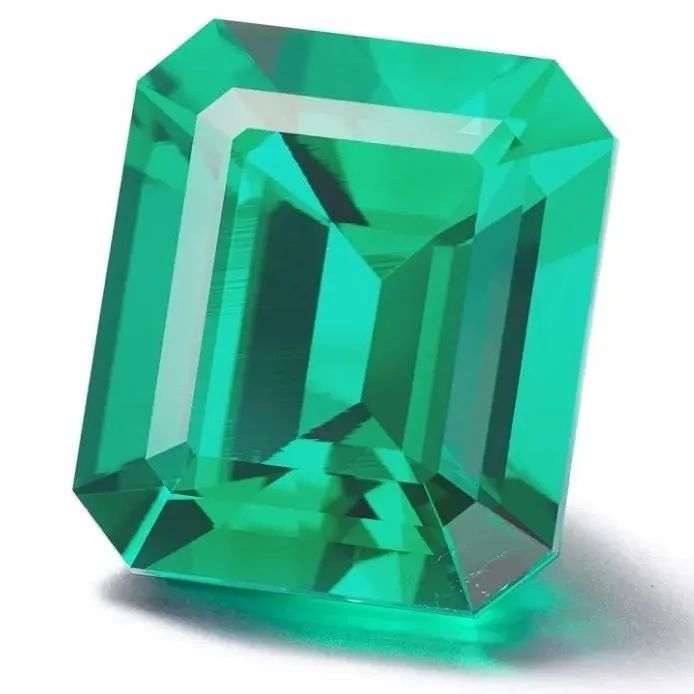
In a recent auction featuring two unheated Burmese “pigeon blood” rubies, the 5.05-carat stone fetched a price over 7 million Hong Kong dollars higher than the 8.05-carat one. The fundamental reason was its exceptional clarity.
Therefore, in top-tier colored gemstone competitions, besides origin and color, the deciding factor is often clarity – a feature frequently overlooked by many, especially for gems that naturally tend to have lower clarity.

Natural Unheated Burmese Pigeon Blood Ruby and Diamond Ring
5.05 carats
April 4, 2023, Sotheby’s Hong Kong
Estimate: 14,000,000 – 22,000,000 HKD
Sold for: 22,835,000 HKD

8.05 carats
April 4, 2023, Sotheby’s Hong Kong
Estimate: 13,500,000 – 18,000,000 HKD
Sold for: 14,970,000 HKD
Professionals at the Tucson show believe that the general price increase of the “classic trio” has led to a rise in value for their “alternative” gemstones, such as red spinel, which closely resembles ruby. Martin Rapaport, Chairman of the Rapaport Group, considers this trend normal: “As the availability of the three major gemstones decreases, people become interested in spinels and other similarly colored stones that usually sell at lower prices, such as rhodolite garnet and red tourmaline.”
So which gemstones have become the “new trend” in the gemstone circle? And which ones have more potential for appreciation? From a collector’s perspective, the “Jedi” spinel is definitely a good choice. Its fluorescent-like red color is no less vibrant than a ruby. In terms of rarity, it also has significant potential for appreciation.
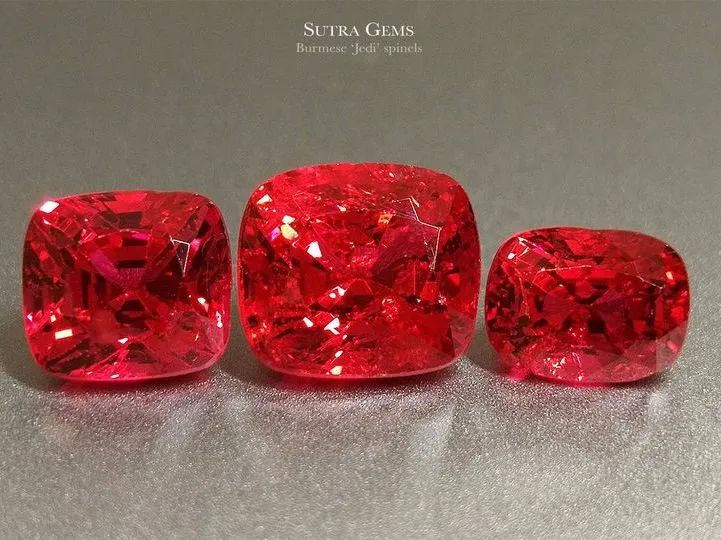
You may have noticed that gemstones with fluorescent effects are generally valuable. For example, Paraiba tourmaline, with its fluorescent-like electric blue color, has always been highly sought after in auctions.
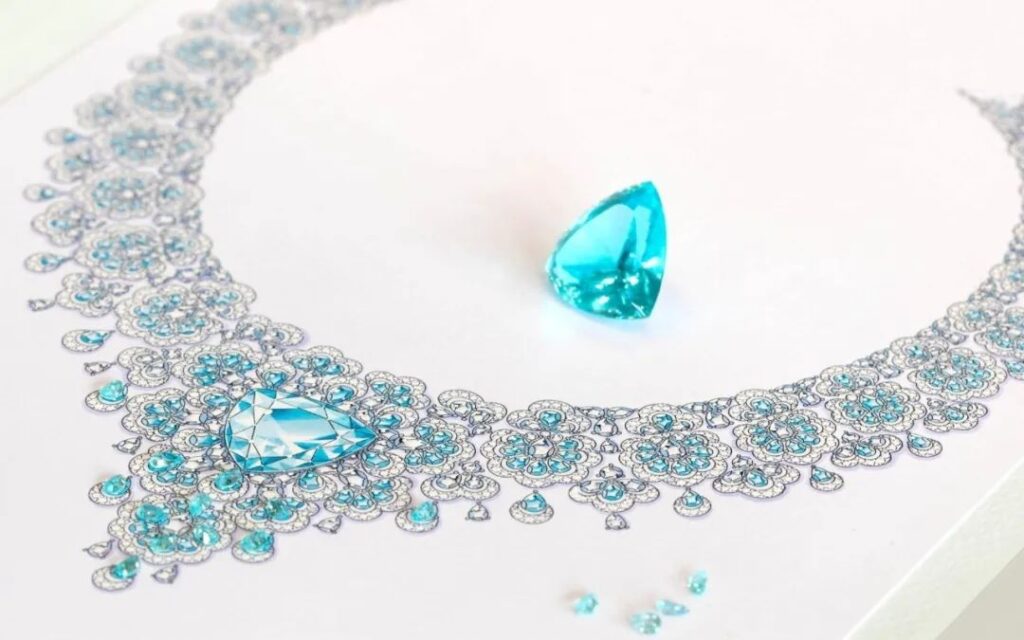
Precious Lace High Jewelry Collection
Majestic Paraiba Necklace
Featuring a 34.63-carat Paraiba tourmaline as the main stone
Additionally, with the recent popularity of opals in high-end jewelry circles, some collectors have turned their attention to black opals. The play-of-color effect in these gemstones gives them a unique beauty.
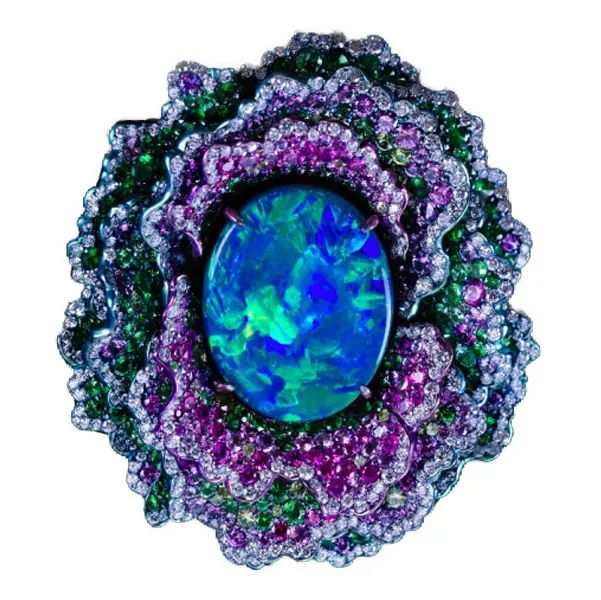
Fleurs d’Opales High Jewelry Collection
Opal Ring
Stuart Robertson, President of Gemworld International Inc., also spoke at the show: “Currently, there simply isn’t enough supply in the fine and extra-fine gemstone categories to create the pressure needed to drive prices down. Gemstone production is far from reaching pre-pandemic levels, with pearls being the most notable category.
This is because most major pearl categories (Tahitian, South Sea, and Akoya) lost entire seasons of production during the pandemic. Pearl prices may remain high for about 3-4 years before declining.”
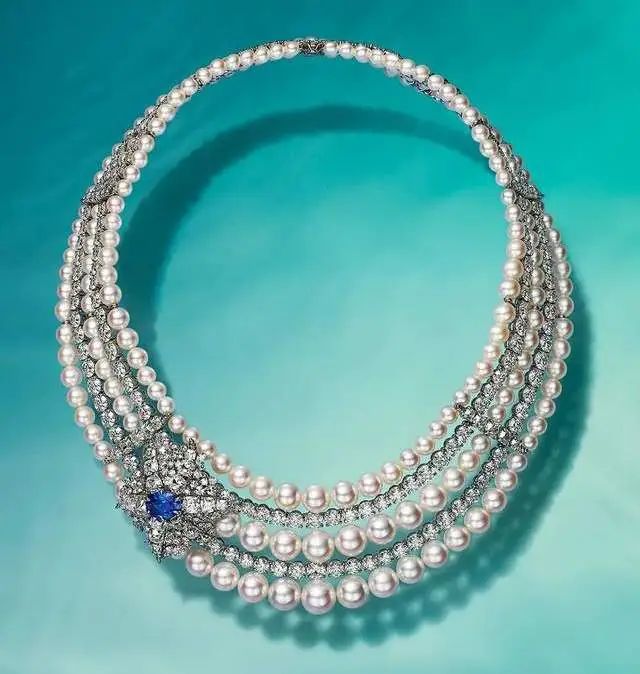
Blue Book High Jewelry Collection
Out of the Blue Chapter Necklace
Platinum, Akoya pearls, spinels, diamonds
However, for the collection market, natural wild pearls still stand at the top. They trigger fierce competition every time they appear at auctions, and even industry players have joined in. For instance, Tiffany previously launched the Bird on a Pearl capsule collection, using pearls from the private collection of Mr. Hussein Alfardan, a Qatari jewelry merchant.
Born into a pearl dynasty, this veteran collector owns the largest collection of natural wild pearls in the Gulf region. He believes: “Natural wild pearls are more expensive and precious than any gemstone in the world.”
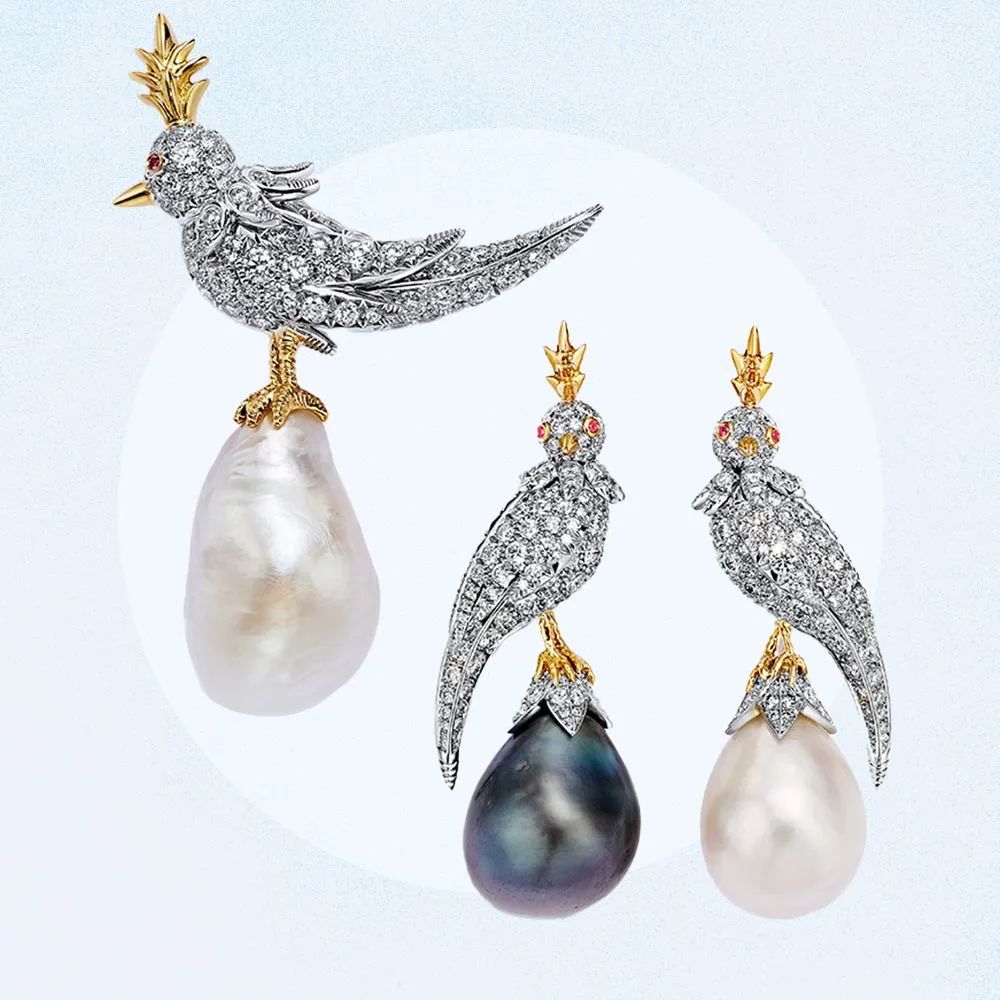
Bird on a Pearl Capsule Collection
While jewelry collection also considers design style, brand, era, and personal style compatibility, gemstone collection truly needs to consider value preservation and appreciation potential.
Therefore, the most important principle is actually “rarity equals value.” When acquiring a gemstone, the primary assessment should be its scarcity, considering comprehensive factors including color, origin, and clarity. Each aspect needs careful analysis, even including future development potential. Some gemstones are non-renewable, making them more precious than those that can be continuously produced.
Hope you can find your ideal treasure!
1-Carat Red Diamond Outshines 280-Carat Colombian Emerald: What Really Matters in Gem Collecting?
Tweet

